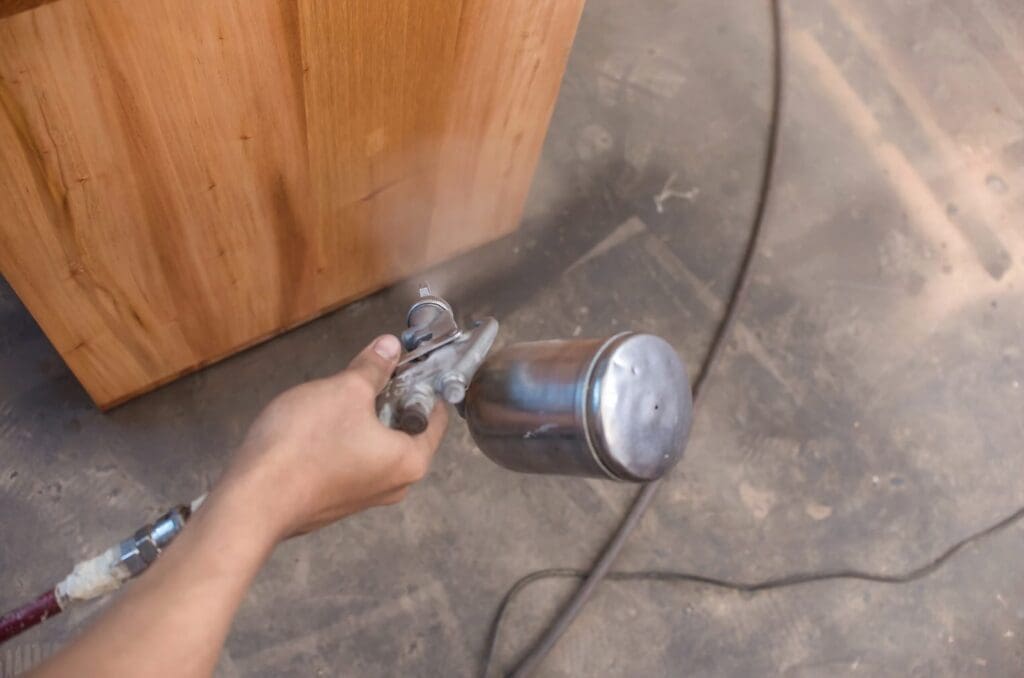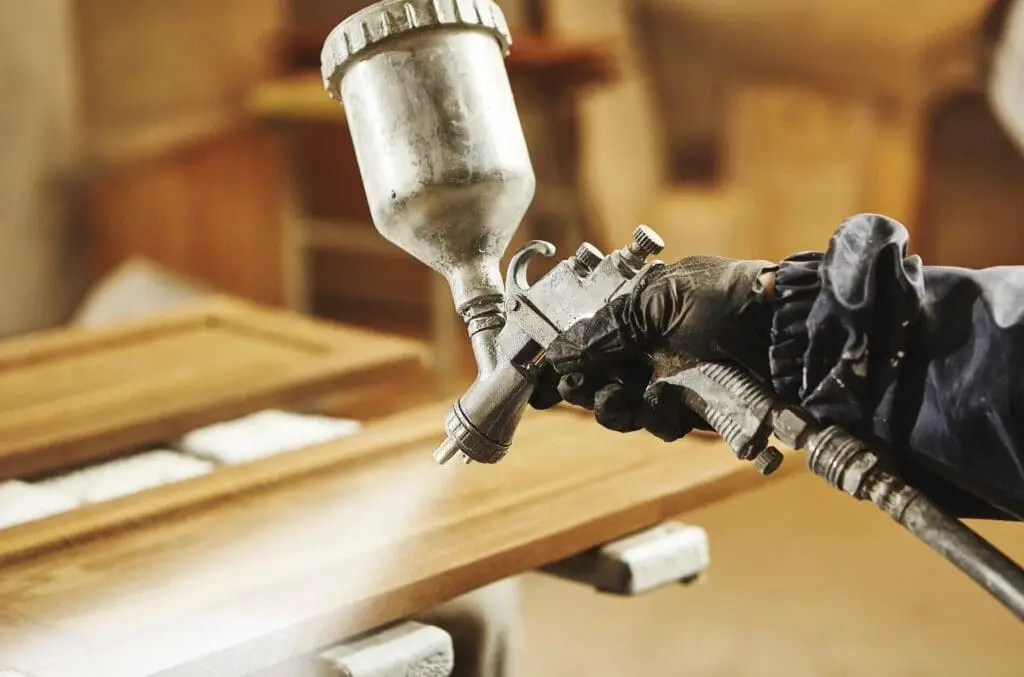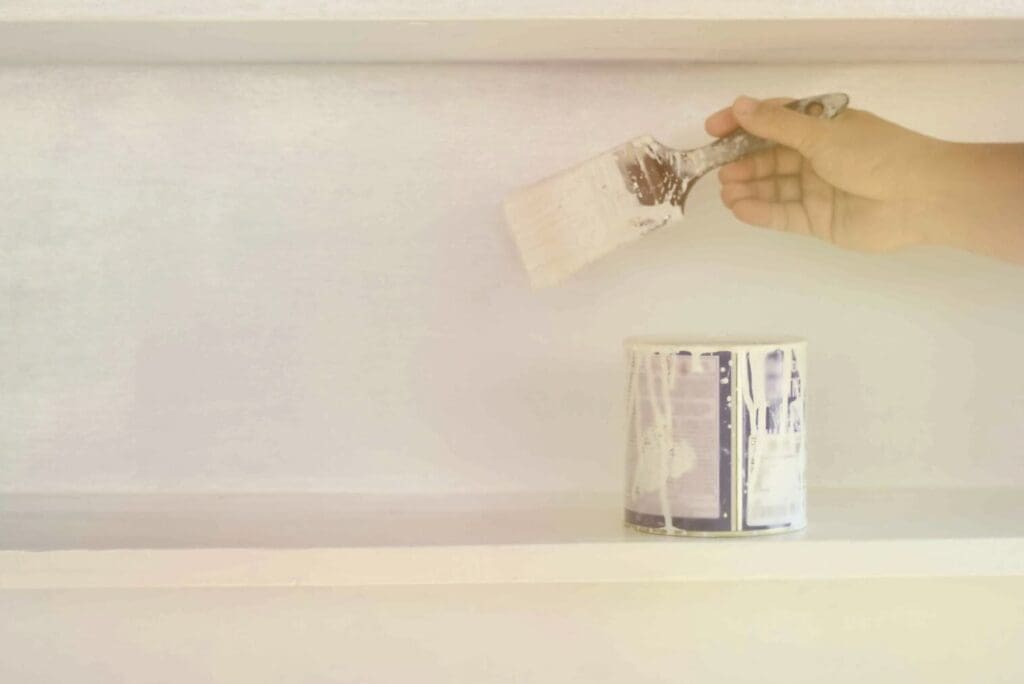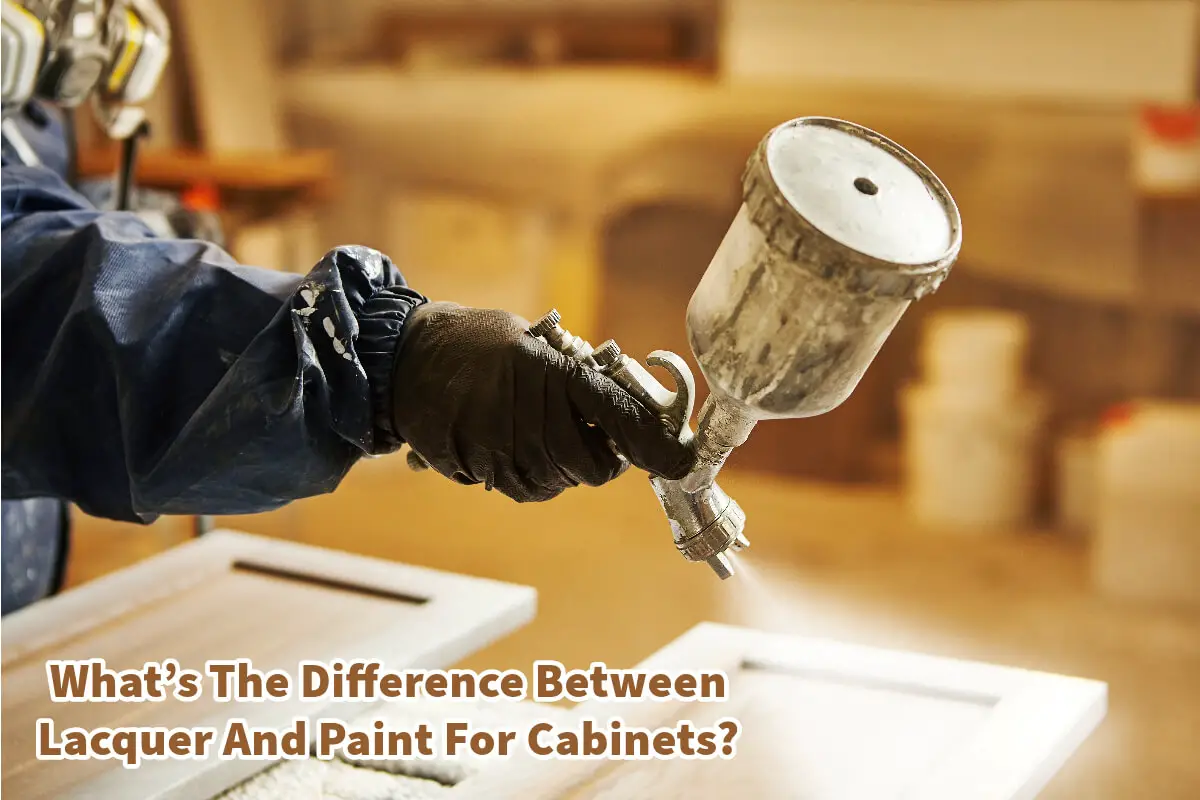Giving kitchen cabinets and bathroom furniture a new lease on life has become a sought-after trend for homeowners eager to refresh their interiors without the hefty expense of complete cabinet replacement.
Lacquer and high-quality enamel paints have emerged as leading contenders in home upgrades. Each brings unique attributes and advantages to the table, offering different pathways to transform your cabinetry’s aesthetic. Dive deep into the defining characteristics that distinguish lacquer from paint and uncover how to make the optimal selection for your home renovation ambitions.
Table of Contents
- What’s The Difference Between Lacquer And Paint For Kitchen Cabinets And Bathroom Furniture
- The Difference Between Lacquer And Enamel Paint
- Choosing Between Lacquer And Paint
- Related Content
What’s The Difference Between Lacquer And Paint For Kitchen Cabinets And Bathroom Furniture
Refinishing kitchen cabinets and bathroom furniture is a popular trend among homeowners looking to rejuvenate their living spaces without incurring the high costs of installing new cabinetry.
As part of this home renovation wave, two main options have risen: lacquer and paint, specifically high-quality enamel paints. Both promise to revitalize the look of your cabinets, but they come with distinct properties and benefits.
Here’s an in-depth look at what separates lacquer from paint and how to determine the right choice for your home improvement project.
What Is Lacquer?
Lacquer is a term that typically refers to a clear coating that, once dried, creates a hard, durable finish. It is known for being chip-resistant, waterproof, and allowing materials like wood to breathe, essential for their longevity.
Lacquer can be used on various surfaces, including wood and metal, and is available in various colors and sheen levels, from matte to high gloss.

The lacquer application is generally done with a sprayer due to its thinner consistency than other finishes. This thinness allows it to penetrate deeply into the wood, offering excellent protection.
Moreover, it’s flexible, accommodating wood’s natural expansion and contraction without cracking. If a lacquered surface dulls, it can be polished back to its original shine.
Water-Based Lacquer
An increasingly popular variant is water-based lacquer, known for its environmentally friendly qualities.
This type of lacquer lacks the volatile organic compounds (VOCs) found in traditional lacquers but still provides the durability and scratch resistance desired in kitchen and bathroom settings.

Benefits Of Lacquer Over Paint
When choosing between lacquer and enamel paint for your cabinets, several factors come into play. Let’s delve into some of the core advantages that lacquer offers:
Durability
Lacquer stands out for its durability. It adheres to surfaces with a strength that surpasses that of most paints, resisting chips and flakes.
Some lacquers are also non-yellowing, meaning they remain clear and don’t discolor over time, keeping the finish looking new for longer. It also dries quickly, becoming touch-dry within an hour and ready for another coat in a few hours, speeding up refinishing.
High-Gloss Finish
Both lacquer and enamel paint can provide a glossy finish, but lacquer does so with a thickness that adds depth to the final look. It may require several coats to achieve the desired effect, but lacquer’s unique formula allows each coat to reactivate the previous one, creating a smooth, level surface that’s hard to rival.
Return On Investment
While lacquer can be pricier than some paints, and professional application is recommended due to the need for proper ventilation and expertise, the investment is often justified. A lacquered finish can enhance the value of your kitchen or bathroom cabinets thanks to its longevity and luxurious finish.
The Difference Between Lacquer And Enamel Paint
Despite their potential for interchangeability in contemporary applications, the primary distinction between lacquer and enamel paint lies in their base composition and intended use. Lacquer, traditionally, is a coating that seals and protects, while enamel paint is designed for coloring and providing a particular aesthetic.

It’s important to note that lacquer is often based on a nitrocellulose resin. This is what allows lacquer to dry quickly and form a tough film. However, nitrocellulose lacquers can turn yellow over time and are flammable, which is why newer, more stable formulations have been developed, including the aforementioned water-based lacquers.
Enamel paints, on the other hand, have a much thicker viscosity and are often oil-based, though water-based enamel paints are also available. They do not penetrate the wood like lacquer but rather create a solid layer on top of it. Enamel paints also take longer to dry, sometimes requiring 24 hours before a re-coat can be applied, which can extend the duration of your project.
Choosing Between Lacquer And Paint
When deciding between lacquer and enamel paint for your kitchen cabinets or bathroom furniture, consider the following:

Durability And Maintenance:
If you want a finish that lasts and is easier to repair, lacquer may be the way to go. However, enamel paint could be your pick for a thicker protective layer that doesn’t need frequent touching up.
Aesthetics:
Enamel paint tends to provide a softer sheen, which can be desirable for a more trWithk. Lacquer’s potential for a higLacquer h-gloss finish often conveys a more modern aesthetic.
Application Conditions:
Lacquer requires careful application with specialized equipment. If you’re considering a DIY approach, enamel paint might be more manageable.
Environmental Concerns:
If indoor air quality or environmental impact is a concern, water bottles for lacquer and paint are recommended.
The decision to use lacquer or paint on kitchen cabinets and bathrooms depends on several considerations, including durability, finish, application, and environmental impact.
While lacquer provides a hard, durable, and glossy finish with quick drying times, enamel paint offers a thicker layer with a more traditional sheen. Your choice will also depend on whether you seek the assistance of a professional or are undertaking a DIY project.
Ultimately, lacquer and enamel paint can rejuvenate your home, but the right choice will align with your personal preferences, practical requirements, and long-term expectations for your living space. Whether you opt for the sleek sheen of lacquer or the robust finish of paint, both routes promise a fresh and inviting look that can transform the heart of your home.
At Mondoro, we would love to help you decide which material would be best for manufacturing your home decor and furniture product.
Find out more about how Mondoro can help you create, develop, and manufacture excellent home decor and home furniture products – including lacquer furniture. Don’t hesitate to contact me, Anita. Check out my email by clicking here or become a part of our community and join our newsletter by clicking here.
Mondoro gives out a FREE Lookbook to anyone interested. You can receive a copy of our latest Lookbook by clicking here.
Listen to our Podcast called Global Trade Gal. You can find it on all major podcast platforms. Try out listening to one of our podcasts by clicking here.
Subscribe to our Mondoro Company Limited YouTube Channel filled with great videos and information by clicking here.
Related Content
The Pros And Cons Of Lacquer Vs. Enamel Finishes
Lacquer and enamel are popular finishes used in various applications, from woodwork and furniture to cars and machinery. While both can provide a glossy finish, they differ in composition, durability, and application.
You can discover more by reading The Pros And Cons Of Lacquer Vs. Enamel Finishes by clicking here.
Guide To Acacia Wood Vs. Rubber Wood
Acacia is a hardwood that is found in Asia and throughout the world. The wood has a lot of color variations and a grain that works well on many types of furniture and other products. Rubber wood is also an excellent wood to use for furniture and other kinds of productions. It works well with many different types of finishes but does not have much of a grain pattern.
You can learn more by reading Guide To Acacia Wood Vs. Rubber Wood by clicking here.
Rattan Material: The Sustainable Choice For Furniture & Home Decor
Rattan is one material that is gaining popularity as it is considered a sustainable choice for furniture and home decor. Not only is rattan a sustainable choice for home decor and furniture, but it also has a lot of top qualities that make it an excellent choice. Read on as we list the 10 top qualities of using rattan material for home decor and furniture production.
You can learn more by reading our blog Rattan Material: The Sustainable Choice For Furniture & Home Decor by clicking here.


